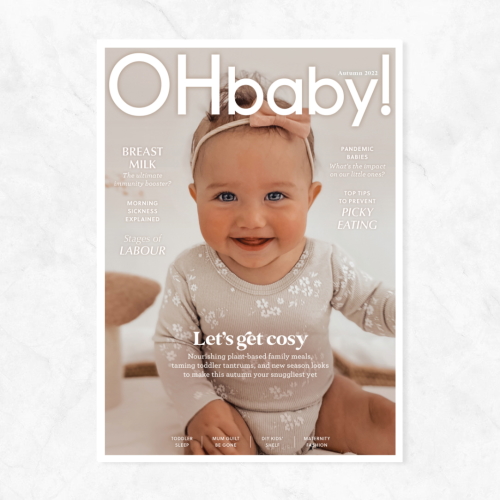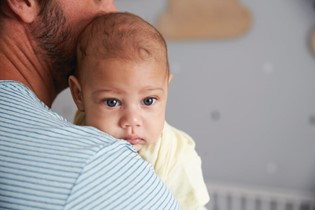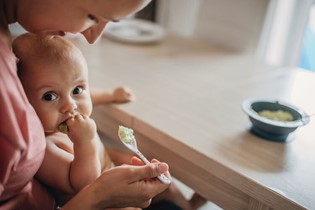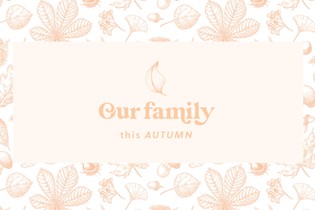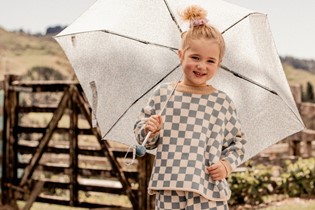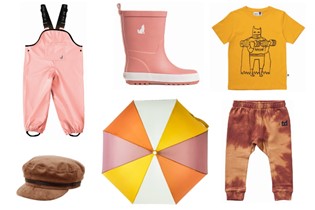Breastmilk: the ultimate immunity booster?

Breast milk is made up of an incredibly unique set of antibodies to protect and boost infant immunity. Worldwide, researchers are still at work to decipher how this process works, but here’s what we do know, with thanks to the experts at Breastfeeding New Zealand.
Breast milk carries protective antibodies from the breastfeeding parent to their child. These antibodies programme the child’s immune system, fight germs and infection, and awaken the child’s own protective response to do the same. It’s essentially the coolest copy and paste transaction of all time. Plus, breast milk is antimicrobial and anti-inflammatory. These properties give the digestive and respiratory systems the best chance to thrive – especially in the newborn phase when they have little to no immunity. It’s nothing short of a miracle that breastfeeding can provide this kind of biological armour to a child.
WHAT IS IMMUNITY? LET'S BREAK IT DOWN
Immunity is our body's defence mechanism against infections. Our immune system attacks germs and helps keep us healthy. Some types of white blood cells, called phagocytes crush threatening organisms that we encounter. Breast milk is unique among body fluids in that it contains a large number of phagocytes – they make up nearly 80% of the total cells present in the colostrum and early breast milk, supporting a newborn's immature immune system.
Others, called lymphocytes, help the body remember the invaders and destroy them. Some studies showed that our lymphocytes travel through breast milk and can educate and influence baby’s immune response repertoire.
We have three types of immunity. These are innate, adaptive, and passive:
- Innate immunity: Our pēpi are born with natural immunity, a type of general protection. Their skin acts as a barrier to block germs from entering the body. And the immune system recognizes when certain invaders are foreign and could be dangerous to our little one’s health and wellbeing.
- Adaptive immunity: Our pēpi develop adaptive immunity when they are exposed to diseases or when they are immunized against them with vaccines.
- Passive immunity: The immune system of pēpi is not fully developed at birth, putting them at increased risk of infection. Antibodies in our breast milk give them temporary immunity to germs and diseases that we have been exposed to, until their own immune system matures.
Similarly to how our body changes continuously during our pregnancy to provide space and nutrients for our baby’s growth, so does our breast milk change postpartum into an evolving composition of nutrients and active factors, from colostrum through transitional milk to mature milk. This evolution provides the right nutrition and protection for the development of pēpi.
Components in our wai ū (breast milk) do many jobs at the same time, a bit like our ability to multitask. They serve as enzymes to build muscle, destroy toxins and break down food particles during digestion. They also work as antimicrobial proteins, growth factors, antioxidants, anti-inflammatory elements, prebiotics and probiotics – the list goes on! These support our little ones’ healthy gut bacteria, while nourishing them with the most nutritious and delicious kai (food).
Every pēpi is different, and breast milk provides a core, yet personalised immunity for their diverse needs in different circumstances.

|
WHAKATAUKI Ūkaipo: kai waiū i te po, “suckling milk at mother’s breast”
Breastfeeding connects pēpi and māmā spiritually and emotionally, as well as providing
|
SOME FACTS ABOUT BREAST MILK COMPOSITION
- Immunoglobulins are the most recognized immune protective component in human breast milk. Breast milk immunoglobulins can recognize an impressive list of viruses, bacteria, fungi and parasites.
- Specific antioxidants in human milk include vitamins A, E, and C, and trace elements of iron, copper, zinc, and selenium, recognised for their beneficial effects helping to prevent disease. The total anti-oxidative capacity of human milk is highest in colostrum and declines during our breastfeeding journey, as our pēpi develop their own immune system, with variability from person to person and time to time.
- The composition of human milk is dynamic, with notable change from colostrum to transitional and then to mature milk, and between preterm and term breast milk and with interindividual and intraindividual variation.
- We produce colostrum from the late stages of our pregnancy through the first five days of lactation, and then transitional milk from five days to approximately two weeks postpartum. The maturation of our milk continues until it is 'fully mature' at 4–6 weeks postpartum. The gold drops of colostrum are rich in leukocytes, protein, HMO's (these contribute to the development of your little one’s microflora and immune system), and bioactive factors, such as immunoglobulin, and antioxidants. While our transitional milk has decreasing amounts of protein and immunoglobulin, it has increasing lactose, fat and water-soluble vitamins to make our breast milk richer in calories – meeting baby’s growth demands. After six weeks, the composition of our breast milk remains constant through the remainder of our breastfeeding journey.
- Breast milk is also made up of other proteins, fats, sugars and even white blood cells that work to fight infection in many ways. They are especially helpful in fighting gastrointestinal infections, since breast milk heads right to the stomach and intestines when our pēpi eats.
- There are other factors in breast milk which directly stimulate and support pēpi and their immune system. The major milk protein lactoferrin helps to balance the immune system’s inflammatory response, which is needed for immune function.
WHAT IS SO SPECIAL ABOUT HUMAN MILK?
Firstly, we produce antibodies to respond to specific threats in our environment, the same environment our pēpi is living within. Therefore, breastfed pēpi receive protection to those infections they are most likely to encounter in their first weeks of life.
Secondly, the antibodies pēpi ingest through breast milk only attack the harmful organisms and protect the useful bacteria, normally found in the gut.
Thirdly, the antibodies we produce are the right amount to only protect pēpi from potential infections, without harming the healthy tissue. They are anti-inflammatory and they don’t have side effects.
Most importantly, new research has shown that breastfeeding is not just providing pēpi with nutrients and immunity, our breast milk is alive and active. It changes with our environment and lifestyle, ensuring continuous, tailor-made protection. It supports our pēpi to develop their own immunity, which, like ours, will be able to respond well to the germs, threats and infections they may encounter in their own environment.
DID YOU KNOW?
- For a long time, breast milk was considered to be sterile (free from living microorganisms). Research now shows that breast milk contains a complex and diverse group of microorganisms: a core group, present in all breast milk, and then specific organisms depending on our genetic make-up, our diet and lifestyle, mode of delivery, geographic area, and lactation stage. These differences provide personalised immunity for our pēpi.
- Because pēpi born prematurely require more nutrition and immune protection, their mothers’ preterm milk has a higher concentration of nutritional and immune factors.
- As pēpi grow and develop their own immune system, breast milk antibodies and their effect decrease.
- The amount and type of antibodies passed to our pēpi depends on our own immune system. If we have had chickenpox in our childhood, we developed immunity against it and pass some of this immunity to our pēpi.
- Breastfeeding cannot protect our pēpi from serious, life-threatening infections like polio, diphtheria or measles, but vaccinations can if you choose to vaccinate. For parents who are unable to breastfeed or who choose not to, infant formula is still a very healthy alternative.
Our breast milk is truly a fascinating kai that supplies our pēpi with far more than nutrition. It protects them against infection until they can protect themselves. It has a unique capacity to stimulate a newborn’s immune system with many positive long-term effects.

FAQ
Do I need to express colostrum?
Because colostrum is so high in antibodies, if you expect an early birth, or you have a medical condition, or have had previous breastfeeding difficulties, you may consider expressing colostrum. You can start expressing from 36-40 weeks in your pregnancy. Your midwife will give you information around expressing colostrum, and instructions on how to hand collect and store it.
Can pēpi be allergic to breast milk?
No. Allergies are an overreaction of the immune system as it tries to protect us from foreign organisms. Studies have shown that breast milk proteins are so mild that they don’t provoke allergies in pēpi. BUT our pēpi can be allergic to foods that we eat, tiny bits of which can make their way into our milk. Some of the most likely suspects are cow’s milk products, soy, wheat, corn, eggs, and peanuts. Talk to your midwife, Tamariki Ora/Well Child Nurse or your doctor if you suspect that your pēpi is allergic to some food you are eating.
Can I breastfeed if my pēpi gets sick?
Breastfeeding when pēpi is sick gives your little one antibodies to fight the illness and is the most easily digestible food source available. It comforts and soothes your sick child. If pēpi has a stuffy nose and is having a tough time breathing and breastfeeding at the same time, breastfeeding with pēpi in an upright position will help.
What if I get sick?
When you have a contagious illness such as a cold, flu, or other mild virus, your pēpi would have been exposed to that illness before you even knew you were sick. Your milk will not transmit your illness to pēpi. Your milk has antibodies that are specific to your illness (plus anything else you or your pēpi have been exposed to), and will help prevent pēpi from getting sick, or if they do get sick, they will probably not be as sick as you. Let your doctor know that you are breastfeeding, so if any medication is prescribed, it’s safe for your pēpi.
Join the BreastfeedingNZ Facebook page to access free support form lactation experts and a lovely community of māmā. Facebook.com/breastfeedingnz.
Photography: Catherine Smith Photography

AS FEATURED IN ISSUE 57 OF OHbaby! MAGAZINE. CHECK OUT OTHER ARTICLES IN THIS ISSUE BELOW
